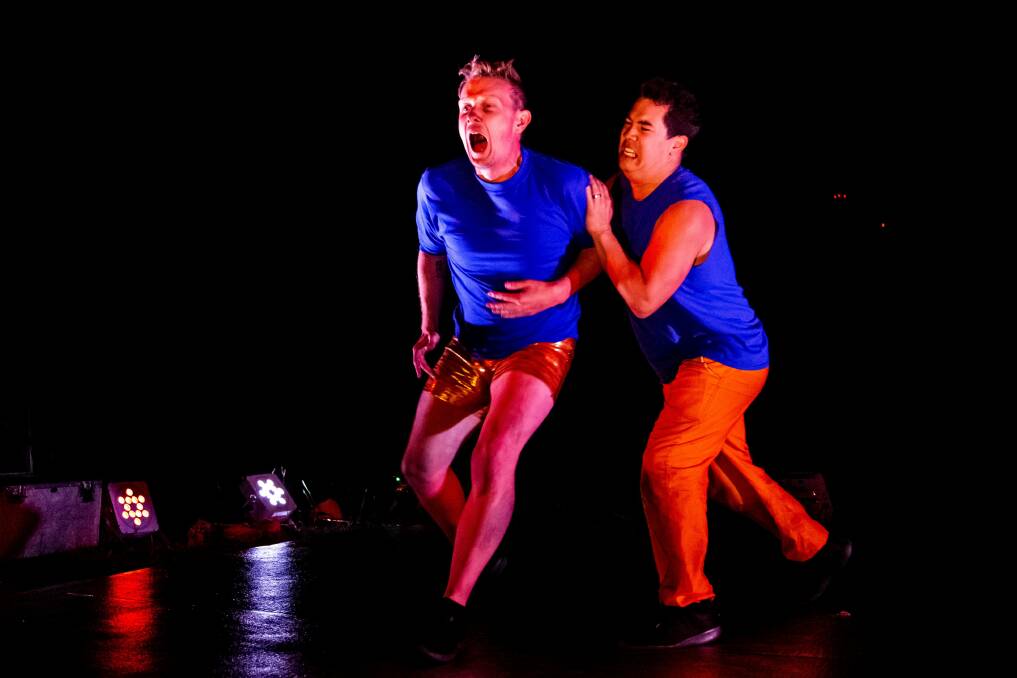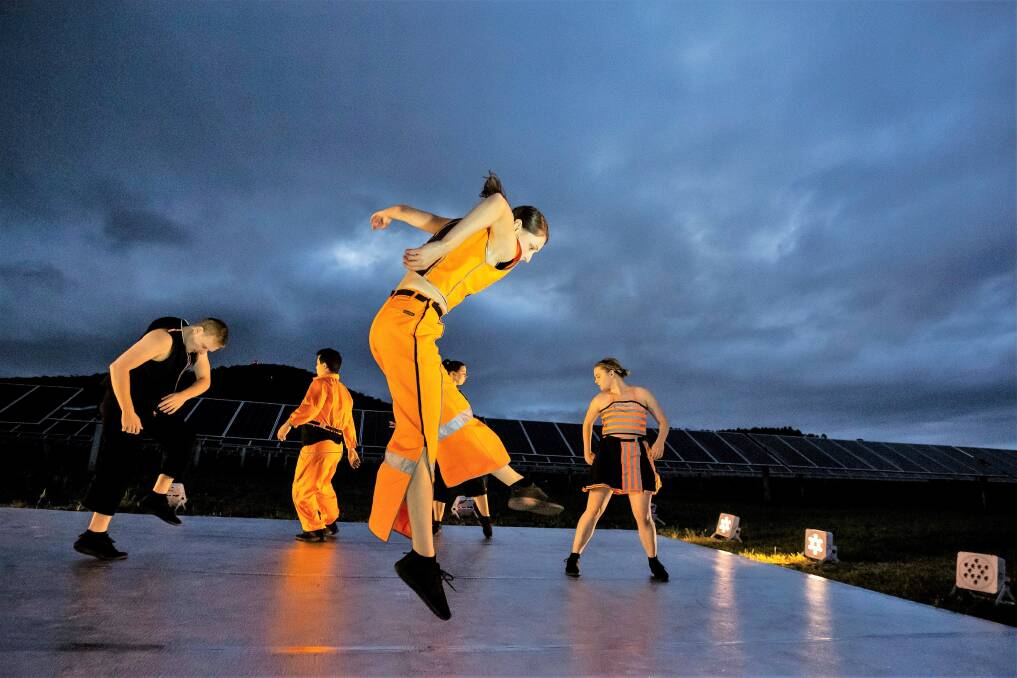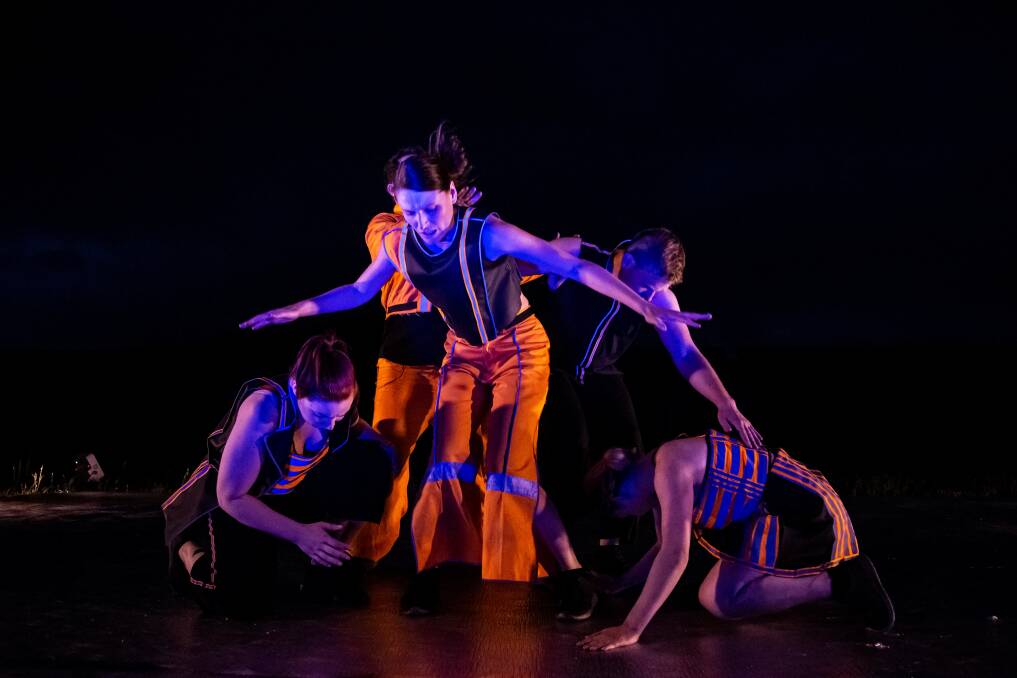Energeia. Australian Dance Party. Alison Plevey (concept and direction); Adam Deusien, Olivia Fyfe, Stephen Gow, Alison Plevey and Alana Stenning (performers); Charne Esterhuizen (costume design); Andy McMillan (sound design); Karla Conway (dramaturgy). Mount Majura Solar Farm, season concluded.
Subscribe now for unlimited access.
$0/
(min cost $0)
or signup to continue reading

The sky began to darken, the solar panels at Mount Majura Solar Farm began to change direction to manage the time of day, a chill wind began to blow, and five dancers from the Australian Dance Party emerged to take their places on the outdoor stage. Most of the audience wished they had dressed more warmly as Energeia began.
This new work from Alison Plevey and her Australian Dance Party drew its inspiration from the Greek concept, dating back to Aristotle, of energy; actual and potential. Hence the title of the work. In the early moments there was an explanation in words of the nature, the power and the qualities of the energy that drives resources and even our devices — energy lives and dies, it can transform itself, it can be responsibly renewed, and so on. This text was supported by sequences that were really mime-like movements accompanied by a lot of walking around the stage space. It didn’t augur well for an evening of innovative dance.
As the work progressed, however, energy started to mean more than simply an essential resource driving industry or activities of various kinds. Personal energy entered the fray in various guises.
Adam Deusien stood out in a frantic, hysterical rant about needing to do things better and to push himself to do more in his life. And Alison Plevey became something like a crazed fitness instructor shouting at us that we can do it all. We were invited to clap along enthusiastically, thus adding our own energy to the evening.

In terms of translating these concepts into dance, I enjoyed most of all Stephen Gow’s breakdancing routine, especially those fast headspins.
There was, in fact, a lot of energetic movement activity throughout the evening. But to tell the truth I found the choreography, with a few exceptions, quite bland. True, there were many times when bodies were flung around, lifted, and twisted together. But great choreography has more to offer than spectacle of this kind. In the right hands, movement embodies meaning and emotion, which then carries ideas forward. I didn’t get that feeling from Energeia. It was just not easy to link the ideas and the movement, except superficially by thinking of chaos.
The work, nevertheless, concluded quietly, even lyrically, with a brief section of unison dancing from the five performers. No bodies being tossed around, no shouting, no drama: it was as if peace had descended and a sense of calm understanding had arrived.

Alison Plevey’s work is always admirable for the way in which she takes on the challenge of creating dance around socio-political issues. I will, however, continue to wish for stronger choreography to emphasise and embody the ideas being put forward.

